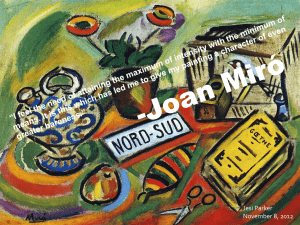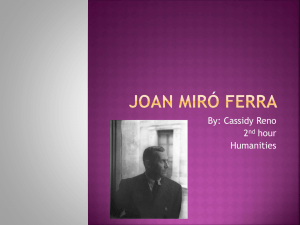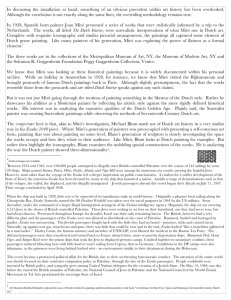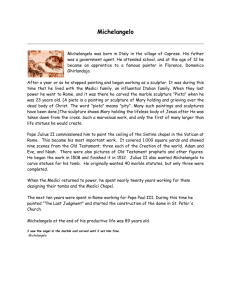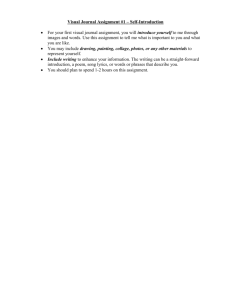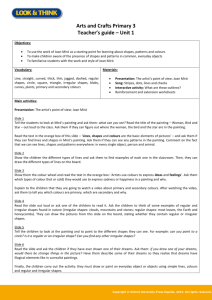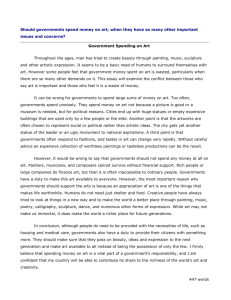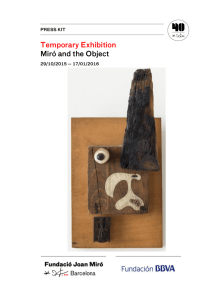Miró Painting and Anti-painting - Museo Nacional Centro de Arte
advertisement
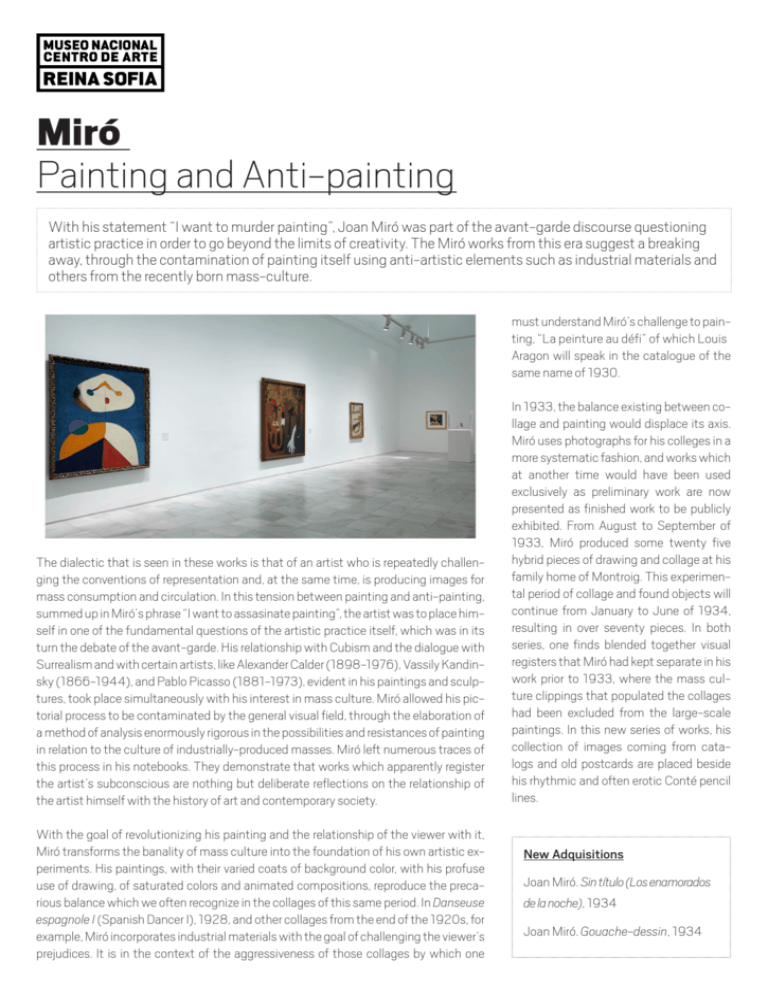
Miró Painting and Anti-painting With his statement “I want to murder painting”, Joan Miró was part of the avant-garde discourse questioning artistic practice in order to go beyond the limits of creativity. The Miró works from this era suggest a breaking away, through the contamination of painting itself using anti-artistic elements such as industrial materials and others from the recently born mass-culture. must understand Miró’s challenge to painting, “La peinture au défi” of which Louis Aragon will speak in the catalogue of the same name of 1930. The dialectic that is seen in these works is that of an artist who is repeatedly challenging the conventions of representation and, at the same time, is producing images for mass consumption and circulation. In this tension between painting and anti-painting, summed up in Miró’s phrase “I want to assasinate painting”, the artist was to place himself in one of the fundamental questions of the artistic practice itself, which was in its turn the debate of the avant-garde. His relationship with Cubism and the dialogue with Surrealism and with certain artists, like Alexander Calder (1898-1976), Vassily Kandinsky (1866-1944), and Pablo Picasso (1881-1973), evident in his paintings and sculptures, took place simultaneously with his interest in mass culture. Miró allowed his pictorial process to be contaminated by the general visual field, through the elaboration of a method of analysis enormously rigorous in the possibilities and resistances of painting in relation to the culture of industrially-produced masses. Miró left numerous traces of this process in his notebooks. They demonstrate that works which apparently register the artist’s subconscious are nothing but deliberate reflections on the relationship of the artist himself with the history of art and contemporary society. With the goal of revolutionizing his painting and the relationship of the viewer with it, Miró transforms the banality of mass culture into the foundation of his own artistic experiments. His paintings, with their varied coats of background color, with his profuse use of drawing, of saturated colors and animated compositions, reproduce the precarious balance which we often recognize in the collages of this same period. In Danseuse espagnole I (Spanish Dancer I), 1928, and other collages from the end of the 1920s, for example, Miró incorporates industrial materials with the goal of challenging the viewer’s prejudices. It is in the context of the aggressiveness of those collages by which one In 1933, the balance existing between collage and painting would displace its axis. Miró uses photographs for his colleges in a more systematic fashion, and works which at another time would have been used exclusively as preliminary work are now presented as finished work to be publicly exhibited. From August to September of 1933, Miró produced some twenty five hybrid pieces of drawing and collage at his family home of Montroig. This experimental period of collage and found objects will continue from January to June of 1934, resulting in over seventy pieces. In both series, one finds blended together visual registers that Miró had kept separate in his work prior to 1933, where the mass culture clippings that populated the collages had been excluded from the large-scale paintings. In this new series of works, his collection of images coming from catalogs and old postcards are placed beside his rhythmic and often erotic Conté pencil lines. New Adquisitions Joan Miró. Sin título (Los enamorados de la noche), 1934 Joan Miró. Gouache-dessin, 1934 Miró was not the only one to see himself attracted by the expired images of mass culture. His Surrealist friends had already become interested in the objects they could find in the street markets. In Barcelona, this creative work connected with the activities programmed by the group of avant-garde artists «Amics de l’Art Nou» (ADLAN) who organized two sessions to show the postcards of the collection of Miró’s friend Joaquim Gomis. What distinguishes Miró is his constant return to painting, not as a search for a traditional mode of artistic practice, but rather as an instrument to question his own conception and that of the public respect for painting and sculpture, and at the same time to challenge the viewer to seriously value the potential of the most vulgar materials to inspire the most-radical artistic experimentation. Bibliography AA. VV. Mirar: Joan Miró, 1917-1934: la naissance du monde. París, Centre Pompidou, 2004. Dupin, Jacques; Lelong-Mainaud, Ariane. Joan Miró: catalogue raisonné. París: Daniel Lelong y Successió Miró, 1999-2004. Fanés, Félix. Pintura, collage, cultura de masas: Joan Miró, 1919-1934. Madrid: Alianza, 2007. Hall, Emily [ed.]. Joan Miró: painting and anti-painting, 1927-1937. Nueva York: MoMA, 2008.
